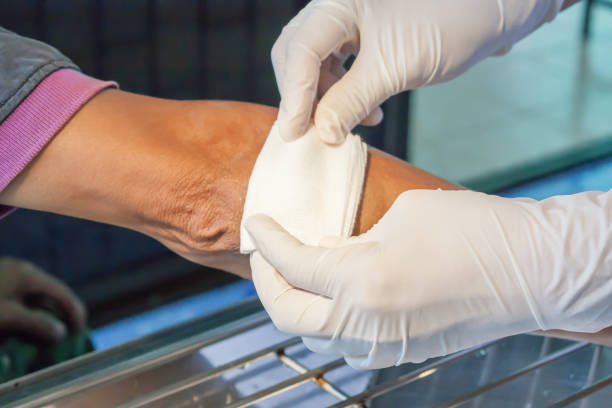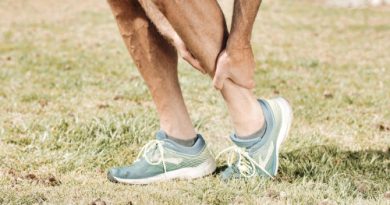Putting things on your skin: first aid myths
Skin injuries are among the most frequently treated first aid issues. Bandages (such as Band-Aids) are one of the most popular medical items worldwide and treating a minor skin wound is probably the first, first aid lesson most people ever receive. Many children believe that Band-Aids cure all wounds.
But aside from Band-Aids, myths abound regarding what to put on your damaged skin. Some of these are out of date, some are ineffective, but others are outright harmful.
Let’s look at a selection of the many myths about putting stuff on your skin.
Contents
Putting butter on a burn
This is a persistent one. In fact, most discussions of first aid myths on the internet mention it.
It probably goes back to a time when the coolest substance in the house was butter, so it wasn’t such a stretch to think of trying to cool a burn with it. Unfortunately, butter can do considerable damage to burned skin. The oil in it tends to trap the heat of the burn inside the skin, hindering the release of heat from the suffering skin and causing more harm than leaving the burn alone.
The current consensus among doctors is that it’s best to treat a burn with cool, running water for 10 minutes. Extremely cold water can be too much of a good thing and bring problems of its own. You may wonder if just plunging the burn into a container of cool water wouldn’t do just as good a job. This is better than no cool water at all, but it’s not quite as effective as the running tap, because while the tap keeps running and bringing water from its source at the temperature you want (and taking the heat away), a container of water can take on the warmth of the human body that’s been plunged into it, losing its coolness and effectiveness fairly quickly.
If butter is the most famous bad first aid treatment for burns, there are many variations on this theme: people have suggested pawpaw ointment, antiseptic cream, toothpaste, egg white or mayo. This assortment of bathroom cabinet stalwarts and random grocery items all seem to have been suggested with the idea of either cooling the wound or disinfecting it. All of them share with butter the unfortunate side-effect of sealing heat into a burn and making the situation worse. The first step has to be dissipating the heat with cool water, and maybe after that the patient can think of applying substances to soothe and sterilize.
It’s important to remember that it’s okay to treat first-degree burns (whose primary symptoms are pain and redness) at home, but their more severe counterparts must be seen to by a medical professional. If the burn blisters or turns any color other than red, see a doctor right away.
Using heat
There’s no doubt that for some maladies, hot water (or a hot water bottle) can be just what’s needed. But there are also persistent myths about what kind of injuries benefit from heat. What are some misconceptions about heat?
Applying heat to a sprain
Heat is good for strained and aching muscles, so it must also be good for sprains, or so the thinking goes with this one. But a sprain is a different kind of injury from a strained muscle. A sprain happens when you move a joint the ‘wrong’ way, resulting in pain, bruising, and swelling, and when you add heat to an already inflamed situation, things can get worse rather than better.
Better to treat your sprain by holding an ice pack to the area for 10 or 20 minutes to reduce the inflammation and numb the area.
Using hot water for frozen skin
What about using heat for an injury caused by the cold? Surely it can’t do any harm to treat your numbed feet or hands with hot water to warm them back up as fast as possible. Unfortunately, even if you’ve been harmed by excess cold, it doesn’t mean you can’t also harm yourself with excess heat, and when the area in question is already very cold, it’s easy to go too far the other way with hot water and scald yourself.
It does help a cold-related injury to warm it up; you just have to be more careful. The best way to go about it is to fill a container (like a bath or a basin) with warm, not hot, water, then put the affected body part or the person in it. If you can comfortably put a hand (that hasn’t been affected by the cold) in the water, you know it’s okay for the injured area.
Other Home Remedies
Of course, there are plenty of home remedies that aren’t related to temperature at all but instead involve using common household substances to treat your minor injuries. And these are definitely a mixed bag. Let’s look at some of the cupboard contents you should not be putting on your body.
Using methylated spirits to bring down a fever
This is one of those remedies where you can definitely see the thought process at play. Someone with a fever feels hot, and when you put methylated spirits on your skin it feels cold, so maybe putting methylated spirits on yourself to bring down your fever would work.
Well, no. No bizarre side effects to worry about here (although it can irritate your skin). It’s just that using methylated spirits to bring down a fever doesn’t really work that well. You’ll get a better result just taking a form of Ibuprofen like Advil or Nurofen.
There’s also the fact that it isn’t always necessary to “treat” a fever – this is really only something to worry about if the fever becomes extreme (i.e., if it reaches 103 F/39.4 C or higher). Usually, the purpose of trying to bring down a fever is just to make the feverish person a bit more comfortable.
Steak on a Black Eye
Okay, this one does work. It’s just that firstly, it isn’t the best option, and secondly, it could cause further problems.
Like most of these home remedies, this one makes a kind of sense. You have an injury; you want to put something cold on it; the steak is cold from the refrigerator. Add to this that the flexible raw steak might be good for fitting the awkward shape of the eye socket. All true; it’s just that raw steak can contain bacteria, which could infect your eye when the two make contact.
A better option is just keeping an ice pack in the freezer. There are even options that stay flexible no matter how cold they’re kept due to their alcohol content. But if you’re caught short, a bag of frozen peas or corn wrapped in a tea towel will do the job with much less risk of infection.
Be prepared!
Common injuries can often be treated without any special techniques or equipment; it’s just a matter of knowing what to do. When in doubt, it’s a good idea to confirm the treatment of a minor injury with a quick Google search, making sure that the advice you follow comes from a trustworthy source.
Even better, you can invest in some first aid training. First aid is taught everywhere from Burlington, Vermont to Brisbane, Queensland, these days so you’ll be better equipped for minor and major medical emergencies.




